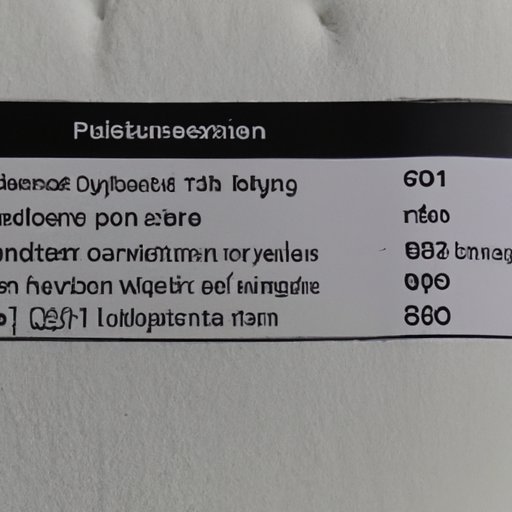Introduction
Sleep number beds are a unique type of mattress produced by the Sleep Number Corporation, formerly known as Select Comfort, which allows users to adjust the level of firmness and support of their mattress by using an electronic remote control. This feature is made possible by a series of air chambers within the mattress that can be inflated or deflated to change the firmness of the bed. Sleep number beds have gained popularity among consumers who prefer to customize their sleeping experience, but some are concerned about the potential health risks associated with the materials and chemicals used in their production.
The Truth About Sleep Number Beds: Understanding the Chemicals Used in Production
Like all mattresses, sleep number beds are made with a variety of materials and chemicals, including foam, fabrics, adhesives, and dyes. The specific materials used in the production of sleep number beds may vary depending on the model and year of production. However, most sleep number beds contain polyurethane foam, a synthetic material that is used in many types of mattresses and furniture.
Polyurethane foam is made by combining a variety of chemicals, including isocyanates, flame retardants, and other additives. While these chemicals are used to improve the durability and comfort of the mattress, they may also be harmful to human health. Exposure to isocyanates, for example, has been linked to asthma, lung damage, and other respiratory problems.
Are Sleep Number Beds Safe? A Deep Dive into the Materials and Toxins Involved
To determine whether sleep number beds are safe, it is important to examine the materials and toxins involved in their production. In addition to polyurethane foam, sleep number beds may also contain flame retardants, which are added to the mattress to reduce the risk of fire. While flame retardants can be effective in preventing fires, they may also contain harmful chemicals such as organophosphate compounds, which have been linked to developmental problems in children, hormone disruption, and other health issues.
The government does not require mattress manufacturers to disclose the specific chemicals used in their products, but many manufacturers use materials that comply with safety regulations set by the Consumer Product Safety Commission (CPSC). The CPSC sets a limit on the use of certain flame retardants, and manufacturers must comply with these regulations in order to legally sell their products in the United States.
What Makes Sleep Number Beds Different, and Are They Harmful to Your Health?
Compared to other types of mattresses on the market, sleep number beds are unique in their use of air technology to customize the firmness and support of the mattress. While this feature is largely regarded as a positive aspect of sleep number beds, some critics argue that the materials and chemicals used to produce the mattress may be harmful to human health.
However, it is important to note that the CPSC sets strict safety standards for all mattresses sold in the United States, regardless of the type or brand. Manufacturers must comply with these standards in order to legally sell their products, and consumers can be confident that sleep number beds meet these safety requirements.

Examining the Controversy: The Safety of Materials Used in Sleep Number Beds
Despite the safety regulations set by the government and the Sleep Number Corporation’s commitment to using safe materials in their products, there is still controversy surrounding the safety of sleep number beds. Some critics argue that the materials and chemicals used in the production of sleep number beds may be harmful and that more needs to be done to regulate the use of these materials.
However, others contend that the materials used in sleep number beds are safe and that the controversy is largely driven by fear and misinformation. The Sleep Number Corporation has conducted extensive testing and research to ensure that their products are safe, and they continue to work with scientists and regulatory agencies to improve the safety of their mattresses.
Sleep Soundly or Sleep with Concern? Investigating the Safety of Sleep Number Beds
Overall, the safety of sleep number beds is a complex issue that requires careful consideration of the materials and chemicals used in their production, as well as the government regulations and safety standards that apply to these materials. While some critics argue that sleep number beds may contain harmful toxins and chemicals, the evidence suggests that sleep number beds are safe and comply with all applicable safety regulations.
However, if you are still concerned about the safety of sleep number beds, there are steps that you can take to reduce your exposure to potentially harmful materials. For example, you can choose to use an organic mattress that is made with natural materials, or you can use a mattress cover to help reduce your exposure to chemicals and toxins.
Conclusion
Overall, sleep number beds are a popular type of mattress that allows users to customize their sleeping experience according to their individual preference. While there is controversy surrounding the safety of the materials and chemicals used in the production of sleep number beds, the evidence suggests that they are safe and comply with all applicable safety regulations. If you are still concerned about the safety of sleep number beds, there are steps that you can take to reduce your exposure to potentially harmful materials and promote a healthy sleeping environment.


